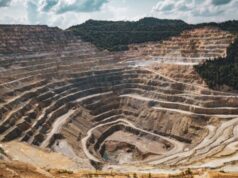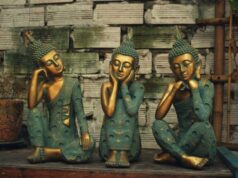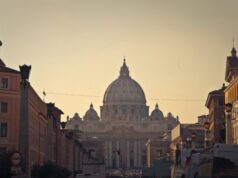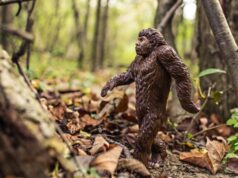A bone that could be a part of Buddha’s skull was found inside this gold casket, encased inside a larger shrine model buried beneath the Grand Bao’en Temple in Nanjing, China.
Researchers say they found a 4-foot shrine holding the skull inside a crypt underneath an ancient Buddhist temple. The 2008 find was recently published in the journal Chinese Cultural Relics.
A team of researchers in China has uncovered what they think could be a skull bone of Buddha inside a 1,000-year-old model Buddhist shrine, located in an underground crypt in Nanjing, China.
Engravings on the small chest say that the piece of parietal bone, which forms the top part of a human cranium, belonged to Siddhartha Gautama — the revered founder of Buddhism.
The 1.2-metre model shrine is made of gold, silver, and sandalwood, and is covered with crystals, agate and lapis lazuli gemstones. Images engraved on the outside of the shrine show scenes from stories about the life of Buddha, including the moment when he escapes the cycle of death and rebirth known as Samsara.
The golden casket was found inside a larger silver casket, decorated with apsaras – female cloud and water spirits – playing musical instruments. Both caskets were placed inside the model shrine, or stupa, which is a hemispherical structure containing relics or remains of Buddhist monks or nuns, used as a place of meditation.
Find your dream job in the space industry. Check our Space Job Board »
The archeologists did not speculate on the authenticity of the bone fragment, and as with many claims about holy relics, verification can be a difficult, if not impossible task. The discovery of a tooth in 1898, which was thought to belong to Buddha, was later analyzed and identified as a pig’s molar. In 2013, a five-centimetre tooth at a Buddhist temple in Rosemead, Calif., drew hundreds of visitors, who believed the tooth belonged to Buddha and possessed supernatural healing powers.
Other relics associated with the religious figure are kept in over two dozen countries around the world.
According to texts from the Indian subcontinent in the 3rd century B.C., Indian emperor Ashoka ordered the construction of 84,000 stupas to house the fragments of Buddha’s remains as far as they could be transported. In his edicts, Ashoka claims he was in contact with rulers as far away as Greece, and that rulers like Antiochus had heard of Buddhist teachings. Many historians credit Ashoka with the initial spread of Buddhism outside of India.
According to the inscriptions, the chest and its various parts were constructed during the reign of Emperor Zhenzong, around 997 to 1022 AD, and they were originally housed in the Grand Bao’en Temple, until it was destroyed during a series of wars. They were then relocated to the underground crypt on 21 July 1011 AD, Deming says.
“Deming praised the emperor for rebuilding the temple and burying the Buddha’s remains, wishing the emperor a long life, loyal ministers, and numerous grandchildren,” Owen Jarus from Live Science reports.
Below’s the opening of the golden casket, and you can see the other treasures:











